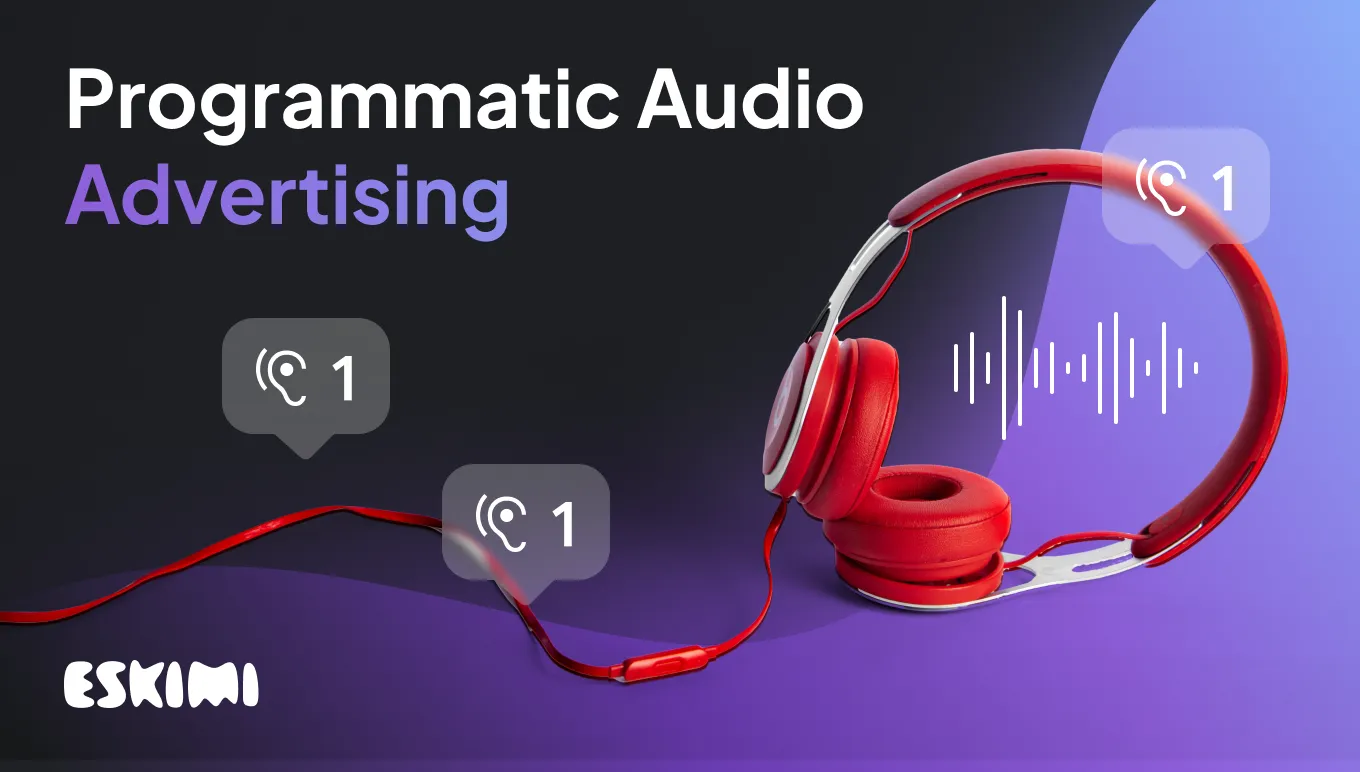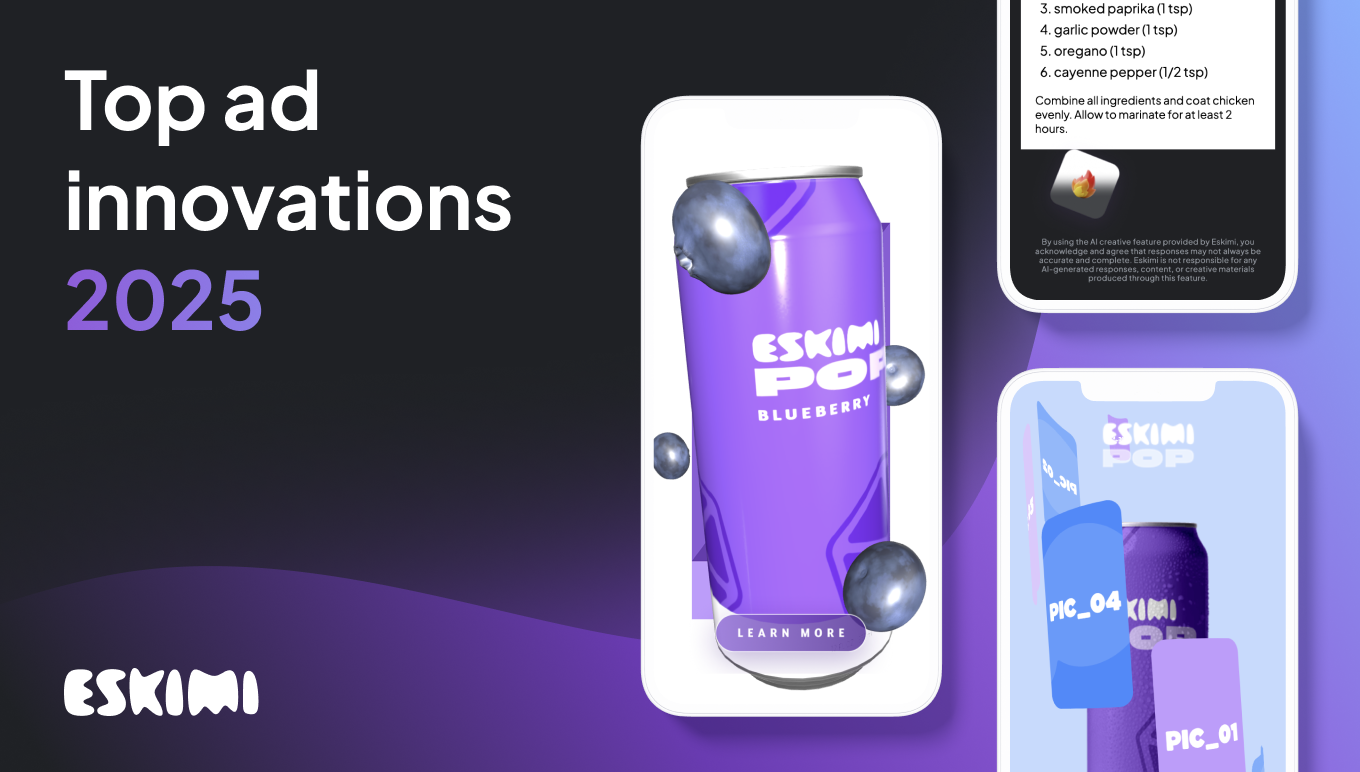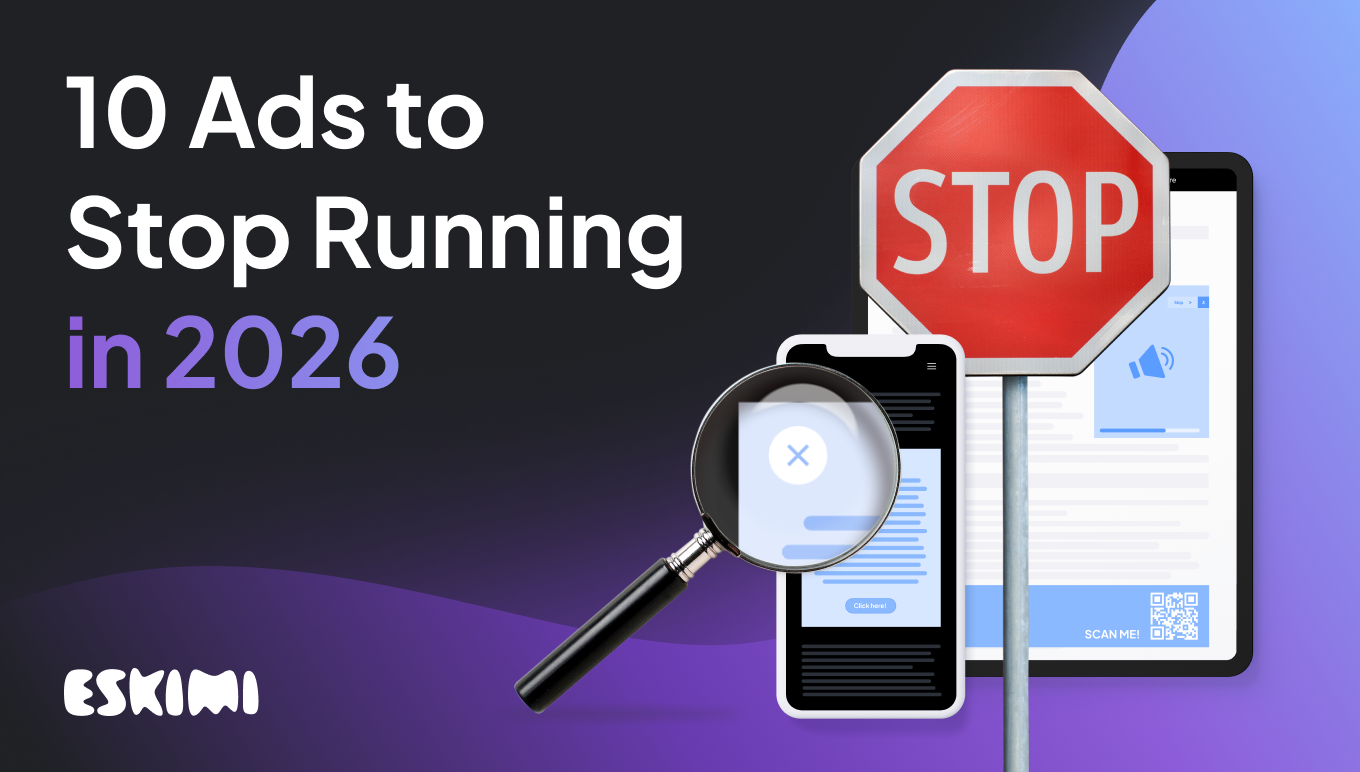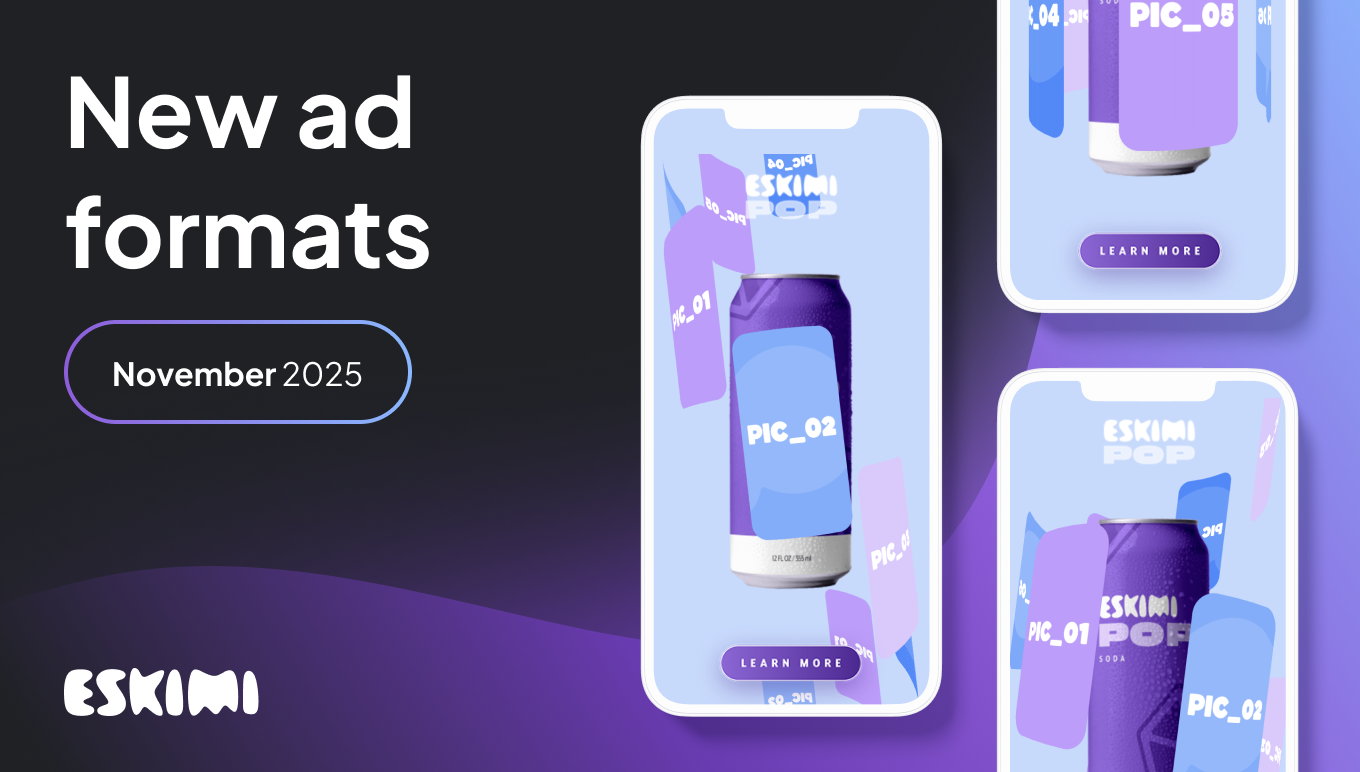Programmatic Audio Ads: The Sound of Success

Before tuning into the world of programmatic audio advertising, let’s visit some foundational principles. Over the past two decades, programmatic advertising has revolutionized the world of digital marketing.
What is it? It’s a cutting-edge approach employing automated technology to buy and sell ad inventory, transforming the traditional and often tedious process into a fast, efficient, and targeted system. How? By using real-time bidding (RTB), where ad impressions are bought and sold in an auction-like environment, happening in mere milliseconds as a webpage load.
Although many people think that programmatic and RTB are the same, that’s untrue. RTB is a subsection of programmatic, a smaller slice of a much bigger pie.
This brings us to programmatic audio advertising, the latest frontier in the programmatic landscape and the rising star of the online ad ecosystem. In essence, programmatic audio advertising is a type of programmatic advertising that employs the same buying and selling principles as audio advertising. This includes advertisements on music streaming platforms, podcasts, internet radio, and any other digital audio channel you can think of. The advent of smart speakers and voice-activated technology has further fueled the growth of this sector, adding another dimension to an already dynamic field.
Over recent years, we have witnessed a noticeable shift towards programmatic audio advertising. According to Statista, ad spending in the digital audio advertising market is projected to show an annual growth rate (CAGR 2023-2027) of 6.04%, resulting in a projected market volume of US$12.82bn by 2027. Why?
It offers a more intimate and engaging way to connect with audiences, and it's gaining traction, thanks in part to the meteoric rise in the popularity of podcasts and music streaming platforms. As technology advances and becomes more sophisticated, advertisers are capitalizing on these opportunities to deliver highly personalized and contextually relevant ads to listeners, taking audience targeting and ad optimization to a whole new level.
Understanding Programmatic Audio Advertising: How it Works, its benefits and Challenges
Programmatic audio advertising represents one of the most innovative advancements within the programmatic advertising space.
Programmatic audio advertising works in the following steps:
- Publishers or audio streaming platforms with ad inventory make it available via a supply-side platform (SSP). Publishers include popular platforms like Spotify, Pandora, or iHeartRadio. The inventory can be pre-, mid-, or post-roll slots in podcasts, music streams, or any other digital audio content.
- Advertisers use demand-side platforms (DSPs) to access this inventory. They can specify their target audience, budget, and the nature of the campaign.
- An ad exchange is a digital marketplace connecting the DSPs and SSPs. It matches the available inventory with advertiser demand in real-time, often using real-time bidding protocols.
- The ad is delivered to the target audience within their chosen audio content, maximizing engagement and reach.
Benefits of programmatic audio advertising
Precision targeting: Advertisers can target ads based on demographics, psychographics, geographics, and even the specific type of audio content listeners are consuming, thereby reaching the right audience at the right time.
Memorable format: Audio ads, due to their immersive nature, can create a powerful impact, driving emotional responses and brand recall.
Scalability and efficiency: The automation in programmatic audio advertising allows for scalability and cost efficiency, offering vast reach while reducing resource-intensive manual tasks.

Challenges of programmatic audio advertising
Limited inventory: While programmatic audio advertising is growing, it has less ad inventory than other programmatic advertising forms, like display or video.
Measurement standards: Metrics for audio ads are still being refined. Without a universally agreed-upon measurement standard, it can be challenging to compare effectiveness across platforms.
Ad blocking: The prevalence of ad-blocking tools can limit the reach of digital audio ads.
With its unique advantages, programmatic audio advertising is undoubtedly a rising star in the online ad ecosystem. However, understanding its operation, leveraging its benefits, and overcoming its challenges will be key to successful advertising strategies.
The scope of programmatic audio advertising
Programmatic audio advertising growth has been propelled by an ever-evolving and expanding digital audio landscape, including podcasts, streaming services, and even digital radio.
Here are some compelling reasons why the reach of audio ads in today's world is constantly growing:
- The ubiquity of mobile devices and smart speakers: Almost every individual now carries a mobile device capable of streaming audio content, and smart speakers are increasingly becoming commonplace in homes and offices worldwide. These devices are the primary channels for programmatic audio ads, giving them an extraordinary reach.
- Rise in popularity of podcasts: Podcasts have experienced a dramatic rise in listenership in the past few years. According to Statista, the number of podcast listeners worldwide has gone from 274.8 million in 2019 to 464.7 million in 2023.
- Growth of music streaming services: Streaming services like Spotify, Apple Music, and Amazon Music have revolutionized how people listen to music. With millions of active users, these platforms offer an unmatched opportunity for streaming services advertising.
Programmatic audio advertising's potential is not just limited to its enormous reach. The impact and effectiveness of audio ads are also key elements of their potential.
Research reveals compelling audio ads insights
Spotify has done incredible work with MindProber to launch Sonic Science, a Spotify Advertising research franchise, to delve deeper into the effects and results of audio listening. This collaboration has yielded some fascinating reports, such as:

How to successfully implement programmatic audio advertising
Here are some expert tips to help you implement a programmatic audio strategy successfully:
- Understand your target audience: Your first step should be to define and understand your target audience clearly. Consider demographics, behavioural traits, and listening habits. Many programmatic platforms provide detailed insights into listener habits, such as their preferred music genres, the times they're most active, and the devices they use. Use this data to create a comprehensive listener profile and tailor your audio ads accordingly.
- Choose the right ad formats: Programmatic audio advertising provides a variety of ad formats, like live-read ads, preroll ads, and midroll ads. Decide the right ad format based on your campaign objectives and audience’s listening behaviour. For example, preroll ads might work well if you're targeting an audience less likely to skip ads.
- Invest in high-quality creative content: Audio advertising depends solely on sound to make an impact, so your ad's content, voice, tone, and sound design must be impeccable. Consider employing professional voice actors and sound engineers to ensure your ad is as compelling and professional as possible.
- Monitor, test and optimize: Constantly track the performance of your audio ads using the available analytics. Test different ads, targeting criteria, and bidding strategies. Optimize your approach based on these insights to improve your ad's performance over time.
Future trends in programmatic audio advertising
As we look toward the future of programmatic audio, several key trends start to take shape. The digital landscape is evolving rapidly, and so is how advertisers and marketers approach programmatic audio. In the coming years, we expect to see a significant shift, largely driven by emerging technologies such as artificial intelligence (AI) and machine learning (ML). Here's a peek into what's ahead:
- AI-driven optimization: The future of programmatic audio is primarily intertwined with the rise of AI. AI has the potential to revolutionize programmatic audio by enabling advertisers to optimize campaigns in real-time, basing decisions on a multitude of variables. On an episode of "The Bill Simmons Podcast", co-founder and famous podcaster Bill Simmons said that the streaming platform is developing AI tools to create targeted ads based on the hosts' voices.
- Machine learning for audience segmentation: Machine learning in programmatic audio is set to upgrade audience segmentation significantly. By analyzing large data sets, machine learning can uncover patterns and trends that human analysts might overlook, leading to a more nuanced understanding of audiences and their behaviour. Moreover, this type of tech can reach niche audiences, tailoring ads to a high level.
- Personalization and dynamic creatives: The rise of programmatic audio has set the stage for unprecedented levels of personalization. With AI and machine learning, creative elements of an ad can be dynamically adjusted to resonate more deeply with individual listeners, considering factors like their location, behaviour, or the time of day.
- Privacy-focused advertising: As consumer concerns about data privacy continue to mount, advertisers must find innovative ways to provide personalized and effective programmatic audio ads while respecting user privacy. AI and ML will be pivotal in developing privacy-preserving advertising techniques.

The realm of programmatic audio advertising is poised for tremendous growth and evolution, reshaped by AI, machine learning, and other emerging technologies. The challenge - and opportunity - lies in leveraging these technologies to deliver high-impact, audience-centric audio ads that capture attention and drive action. The rise of programmatic audio as a dominant force in the online ad ecosystem isn't just a prediction - it's a reality that's already in motion.
Level Up Your Advertising with Eskimi
- Reach 96% of Open Web
- 2,500+ Targeting Options
- 100% Managed or Self-Service
- In-House Creative Studio Team
- Display, Video, In-Game & CTV
- #1 Rated DSP on G2





